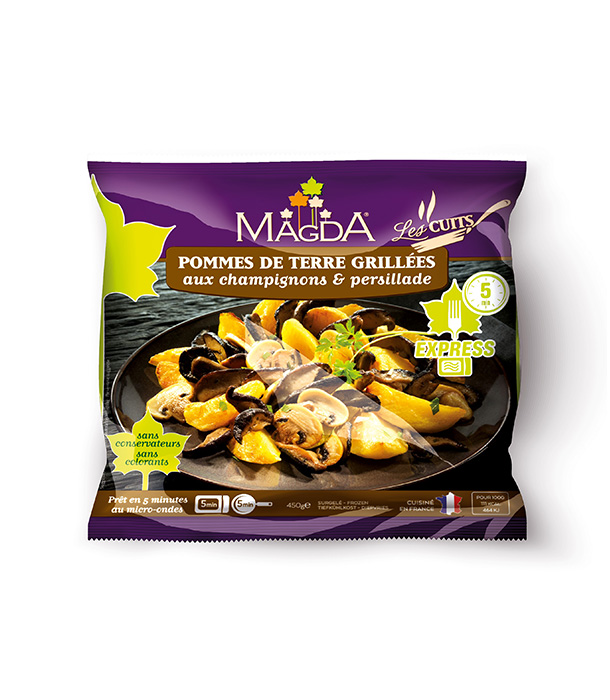At INRA PACA and more specifically at the BBF mixed research unit (Fungal Biodiversity and Biotechnology) at the Luminy campus of Aix Marseille University, within the Marseille Polytech Engineering School (Biotechnology Department), people are preparing for the future with mushrooms.
Jean-Claude Sigoillot, Director of the BBF unit, firmly believes that: “with mushroom enzymes, we can replace all the petrol derivatives with products that are better for the environment.” There are around thirty laboratories around the world working on the capacity of some mushrooms to degrade wood and also straw and plant waste, using their enzymes. The molecules produced by this phenomenon can then be used in chemical procedures with many uses: bleaching paper paste without using chlorine, digesting the inks on recycled paper or producing agglomerate wood furniture without formaldehyde.
But the best direction to develop is that of biofuel. These mushrooms breakdown the lignin in wood and do not touch the cellulose, resulting in a sugar that, fermented by yeast, produces ethanol. At Luminy, there are nearly 2,000 strains of mushrooms being studied, many of which come from Guyana. This new sector could help reduce the production of ethanol from beets or sugar cane, used today for its edible part. The BBF unit’s research programme is part of a more global project called Futurol, which “hopes to launch a process, technologies and products (yeasts and enzymes) on the market to ensure the production of second generation bioethanol using whole plants and also farming and forest co-products, green waste and other ligno-cellulosic biomass,” and has a budget of nearly 80 M€.
Further proof that mushrooms, delicious on a plate, are also man’s best friend.
Magda

 Beyond its flavour qualities, we have all already witnessed the potential powers of mushrooms. Some consider them to be the future saviour of humanity, in particular because of their ability to decompose organic matter. In the meantime, two Austrian designers, Julia Kaisinger and Katharina Unger, have designed a prototype that combines taste and recycling. In collaboration with scientists from the microbiology department of Utrecht University in the Netherlands, the two young women have created the Fungi Mutarium, a funny piece of furniture on four legs that looks like it belongs in a spaceship rather than on Earth. It is a mycelium nursery and a mini mushroom farm under a transparent dome.
Beyond its flavour qualities, we have all already witnessed the potential powers of mushrooms. Some consider them to be the future saviour of humanity, in particular because of their ability to decompose organic matter. In the meantime, two Austrian designers, Julia Kaisinger and Katharina Unger, have designed a prototype that combines taste and recycling. In collaboration with scientists from the microbiology department of Utrecht University in the Netherlands, the two young women have created the Fungi Mutarium, a funny piece of furniture on four legs that looks like it belongs in a spaceship rather than on Earth. It is a mycelium nursery and a mini mushroom farm under a transparent dome. There is no water or soil to grow the mushrooms, just a growing medium in the shape of an egg made of agar-agar, sugar and starch, like the agar media used in laboratories (made of agar-agar, water and minerals). In these little beds, sterilised plastic is installed under a UV lamp (a special compartment is designed for this under the dome), then a few drops of mycelium are added. And then we wait. And wait. You need to be patient as the plastic decomposition that enables the mushrooms inflorescence in the shape of an upside-down conical hat can take a few weeks. The next research phase will focus on accelerating the process, using several variables like temperature and humidity, for example. But already, despite the futuristic and unappealing look, the mushrooms obtained in this environment are clearly perfectly edible. To find out more, I recommend watching this video: Fungi Mutarium: Prototype.? ?Recycling extremely polluting materials like plastic to cook up delicious dishes…now there’s a future that smells like the fabulous forest.? ?Magda
There is no water or soil to grow the mushrooms, just a growing medium in the shape of an egg made of agar-agar, sugar and starch, like the agar media used in laboratories (made of agar-agar, water and minerals). In these little beds, sterilised plastic is installed under a UV lamp (a special compartment is designed for this under the dome), then a few drops of mycelium are added. And then we wait. And wait. You need to be patient as the plastic decomposition that enables the mushrooms inflorescence in the shape of an upside-down conical hat can take a few weeks. The next research phase will focus on accelerating the process, using several variables like temperature and humidity, for example. But already, despite the futuristic and unappealing look, the mushrooms obtained in this environment are clearly perfectly edible. To find out more, I recommend watching this video: Fungi Mutarium: Prototype.? ?Recycling extremely polluting materials like plastic to cook up delicious dishes…now there’s a future that smells like the fabulous forest.? ?Magda





